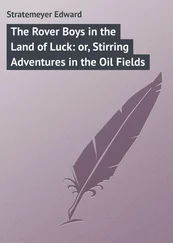Stephen Fry - The Ode Less Travelled - Unlocking The Poet Within
Здесь есть возможность читать онлайн «Stephen Fry - The Ode Less Travelled - Unlocking The Poet Within» весь текст электронной книги совершенно бесплатно (целиком полную версию без сокращений). В некоторых случаях можно слушать аудио, скачать через торрент в формате fb2 и присутствует краткое содержание. Жанр: Старинная литература, на английском языке. Описание произведения, (предисловие) а так же отзывы посетителей доступны на портале библиотеки ЛибКат.
- Название:The Ode Less Travelled: Unlocking The Poet Within
- Автор:
- Жанр:
- Год:неизвестен
- ISBN:нет данных
- Рейтинг книги:3 / 5. Голосов: 1
-
Избранное:Добавить в избранное
- Отзывы:
-
Ваша оценка:
- 60
- 1
- 2
- 3
- 4
- 5
The Ode Less Travelled: Unlocking The Poet Within: краткое содержание, описание и аннотация
Предлагаем к чтению аннотацию, описание, краткое содержание или предисловие (зависит от того, что написал сам автор книги «The Ode Less Travelled: Unlocking The Poet Within»). Если вы не нашли необходимую информацию о книге — напишите в комментариях, мы постараемся отыскать её.
The Ode Less Travelled: Unlocking The Poet Within — читать онлайн бесплатно полную книгу (весь текст) целиком
Ниже представлен текст книги, разбитый по страницам. Система сохранения места последней прочитанной страницы, позволяет с удобством читать онлайн бесплатно книгу «The Ode Less Travelled: Unlocking The Poet Within», без необходимости каждый раз заново искать на чём Вы остановились. Поставьте закладку, и сможете в любой момент перейти на страницу, на которой закончили чтение.
Интервал:
Закладка:
Parody
Neither are parody and pastiche an unfit manner for the poet. Chaucer began the trend in English with a scintillating parody of badly versified epical romance called Sir Thopas . Shakespeare parodied Marlowe, as did Donne (in praise of angling in the style of ‘The Passionate Shepherd’); Byron parodied and was parodied, Dryden, Johnson, and Swift parodied and were parodied and so it went on. Trends in the actual nuts and bolts of versification were ruthlessly guyed by Pope in the Dunciad : George Canning and John Hookham Frere (the former of Castlereagh, the latter of Whistlecraft fame and the pair of them high Tory ‘Anti-Jacobins’) made great sport of the democrat Southey’s experiments in dactylics:Wearisome Sonnetteer, feeble and querulous,Painfully dragging out thy democratic lays–Moon-stricken sonneteer, ‘ah! for thy heavenly chance!’Sorely thy Dactylics lag on uneven feet:Slow is the syllable which thou would’st urge to speed,Lame and o’erburden’d, and ‘screaming its wretchedness’.
They had a go at his Sapphic verse too:Needy Knife-grinder! whither are you going?Rough is the road, your wheel is out of order–Bleak blows the blast; your hat has got a hole in ’t,
So have your breeches.
Byron was always savage at the expense of the ‘Lakers’. It is fair to observe that he, silver-spoon nobleman as was, remained a true radical all his life, while both Southey and Wordsworth accepted the King’s shilling and butt of malmsey as Poets Laureate, ending their lives as comfortable establishment grandees. Byron seemed to detect an air of fraudulence early on. Here is his parody of Wordsworth’s ‘Peter Bell’.There’s something in a stupid ass:And something in a heavy dunce;But never since I went to schoolI saw or heard so damned a foolAs William Wordsworth is for once.
They say the modern literary world is full of squabbling hatred and simmering resentments, but it is as nothing to the past.
The individuality and restless stressed energy of Hopkins makes him ripe for pastiche. Anthony Brode was inspired to write a perfect Hopkins parody after reading this on his cereal packet one morning: ‘Delicious heart-of-the-corn, fresh-from-the-oven flakes are sparkled and spangled with sugar for a can’t-be-resisted-flavour.’Parenthesis proud, bracket-bold, happiest with hyphensThe writers stagger intoxicated by terms, adjective-unsteadied–Describing in graceless phrases fizzling like soda siphonsAll things crisp, crunchy, malted, tangy, sugared and shredded.
Parodies are rife in popular culture, a staple of television comedy, but literary and verse parodies seem to have fallen from fashion, Wendy Cope being one of the few practising poets who plays happily and fruitfully with the style of other poets. Now it’s your turn.
Poetry Exercise 17
I am sure you have a favourite poet. Write a parody of their style and prosodic manner. Try and make it comically inappropriate: if you like Ted Hughes, try writing a fearsome, physically tough description of a Barbie doll or something else very un-Hughesy. I know this is a bit of a Spectator Competition sort of exercise, but it is a good way of noticing all the metrical, rhyming and formal mannerisms of a poet. If you are really feeling bold, try writing a cento. You will need the collected works of the poet you choose, otherwise a cento mixing different verses from an anthology might be worth trying. Surprise yourself.
IX
Exotic Forms 15
Haiku—senryu–tanka–ghazal–luc bat–tanaga
H AIKU
Five seven and five:
Seventeen essential oils
For warm winter nights.
The HAIKU, as you may already know, is a three-line poem of Japanese origin whose lines are composed of five, seven and five syllables. There is much debate as to whether there is any purpose to be served in English-language versions of the form. Those who understand Japanese are strong in their insistence that haikus in our tongue are less than a pale shadow of the home-grown original. English, as a stress -timed language, cannot hope to reproduce the effects of syllable -timed Japanese. I define these terms (rather vaguely) in the section on Syllabic Verse in Chapter One.
Just so that you are aware, there is a great deal more to the haiku than mere syllable count. For one thing, it is considered de rigueur to include the season of the year, if not as crassly as mine does, then at least by some other reference to weather or atmosphere, what is known as a kigo word. A reverence for life and the natural world is another apparent sine qua non of the form, the aim being to provide a kind of aural, imagistic snapshot (a shasei or ‘sketch of nature’). The senses should be engaged and verbs be kept to a minimum, if not expunged entirely. The general tenor and thrust of the form (believe me, I am no expert) seems to be for the poet ( haijin ) to await a ‘haiku moment’, an epiphany or imaginative inspiration of some kind. The haiku is a distillation of such a moment. In their native land haikus are written in one line, which renders the idea of a 5–7–5 syllable count all the more questionable. They also contain many puns ( kakekotoba ), this not being considered a groan-worthy practice in Japanese. A caesura, or kireji , should be felt at the end of either the first or second ‘line’.
Haiku descends from haikai no renga , a (playful) linked verse development of a shorter form called waka . The haikai’s first stanza was called a hokku and when poets like Masaoka Shiki developed their new, stand-alone form in the nineteenth century, they yoked together the words haikai and hokku to make haiku . We now tend to backdate the term and call the short poems of seventeenth-century masters such as Matsuo Basho haikus , although they ought really to be called hokkus . Clear?
A haiku which does not include a kigo word and is more about human than physical nature is called a SENRYU which, confusingly, means ‘river willow’.
Those who have studied the form properly and write them in English are now very unlikely to stick to the 5–7–5 framework. The Japanese on (sound unit) is very different from our syllable and most original examples contain far fewer words than their English equivalents. For some the whole enterprise is a doomed and fatuous mismatch, as misguided as eating the Sunday roast with chopsticks and calling it sushi. Nonetheless non-Japanese speakers of some renown have tried them. They seemed to have been especially appealing to the American beat poets, Ginsberg, Ferlinghetti, Corso and Kerouac, as well as to Spanish-language poets like Octavio Paz and Jorge Luis Borges. Here are a couple of Borges examples (it is possible that haikus in Spanish, which like Japanese is syllabically timed, work better than in English)–my literal translations do not obey the syllabic imperatives.La vasta nocheno es ahora otra cosaque una fragancia.(The enormous night
is now nothing more
than a fragrance.)Callan las cuerdas.La música sabíalo que yo siento.(The strings are silent.The music knewWhat I was feeling.)
Borges also experimented with another waka -descended Japanese form, the TANKA (also known as yamato uta ). I shall refrain from entering into the nuances of the form, which appear to be complex and unsettled–certainly as far as their use in English goes. The general view appears to be that they are five-line poems with a syllable count of 5,7,5,7,7. In Spanish, in the hands of Borges, they look like this:La ajena copa,La espada que fue espadaEn otra mano,La luna de la calle,Dime, ¿acaso no bastan?(Another’s cup,The sword which was a swordIn another’s hand,The moon in the street,Say to me, ‘Perhaps they are not enough.’)
Читать дальшеИнтервал:
Закладка:
Похожие книги на «The Ode Less Travelled: Unlocking The Poet Within»
Представляем Вашему вниманию похожие книги на «The Ode Less Travelled: Unlocking The Poet Within» списком для выбора. Мы отобрали схожую по названию и смыслу литературу в надежде предоставить читателям больше вариантов отыскать новые, интересные, ещё непрочитанные произведения.
Обсуждение, отзывы о книге «The Ode Less Travelled: Unlocking The Poet Within» и просто собственные мнения читателей. Оставьте ваши комментарии, напишите, что Вы думаете о произведении, его смысле или главных героях. Укажите что конкретно понравилось, а что нет, и почему Вы так считаете.










